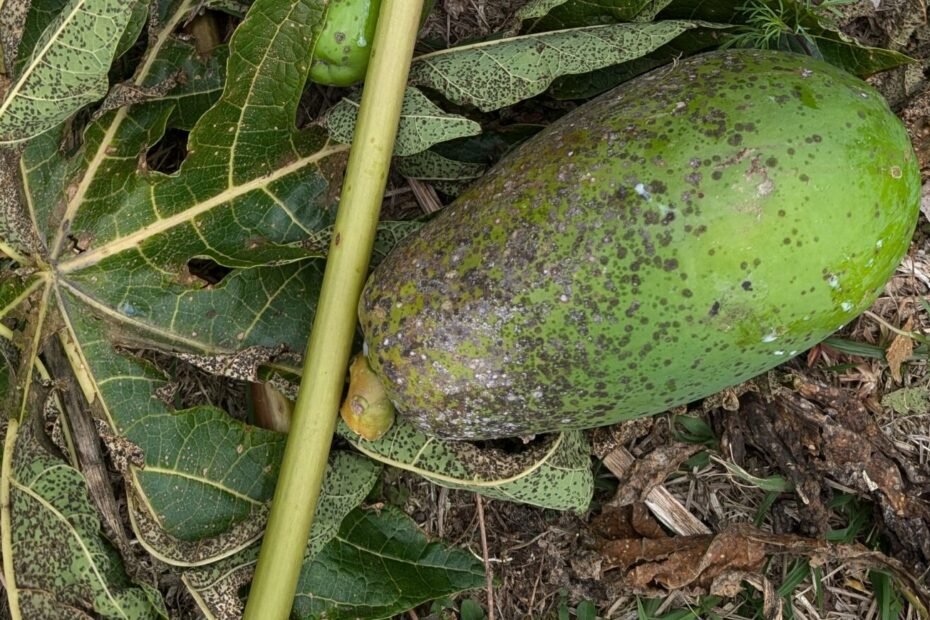Pestilence hit our community garden. We had to destroy an entire paw paw crop.
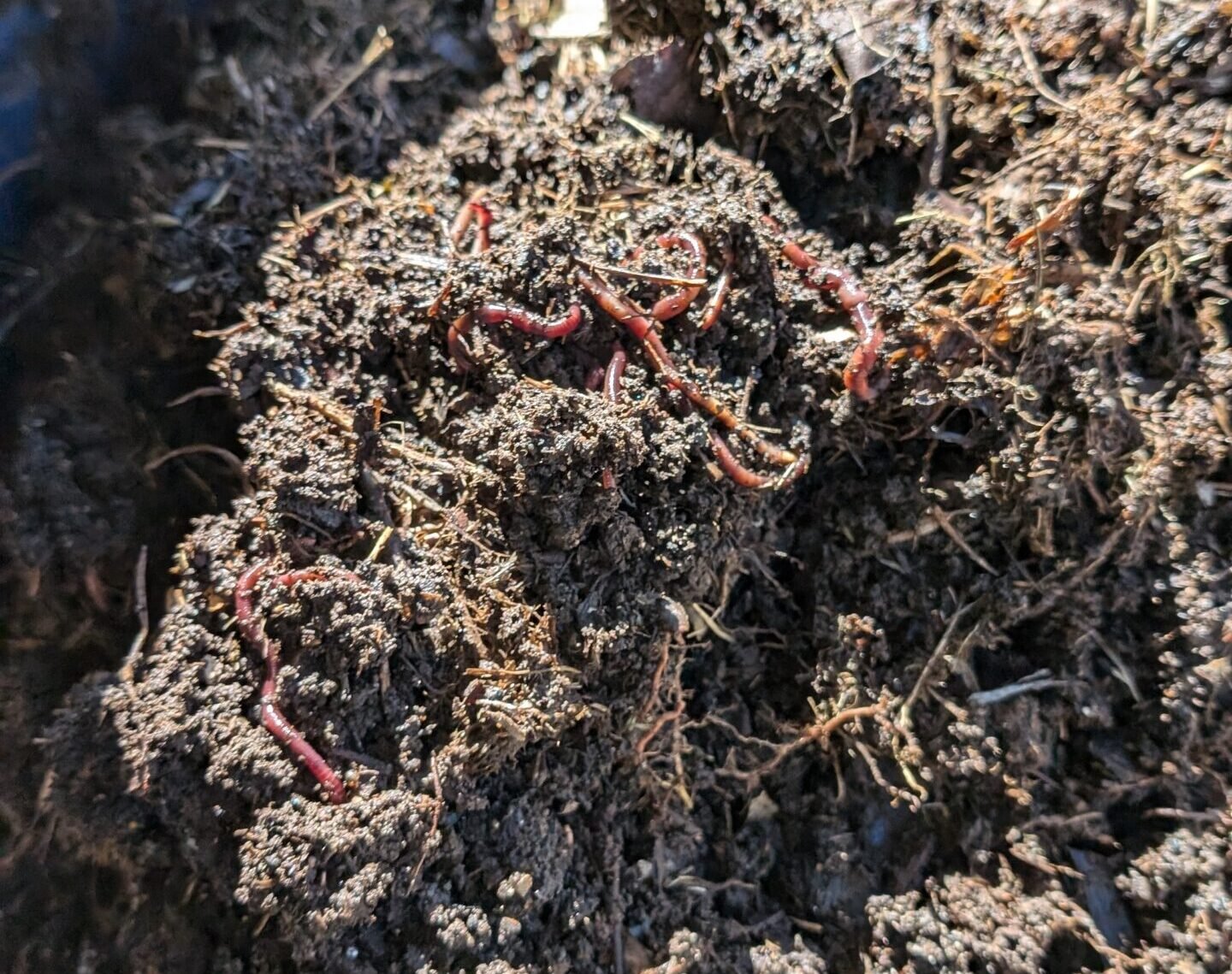
There I was, extolling the virtues of fungus in helping us break grass clippings down to soil and, now this.
“It’s a disease!”
Asperisporium caricae specifically affects paw paw; especially after rainy periods.
We have had rain all summer and autumn, and winter has been less dry than usual (Sunny, dry winters are a feature of sub-tropical coastal Australia).

The black spots appear on stems, leaves and fruit and appear to suck the life out of the host in the immediate area around the spot. See how the leaves in the title image for this piece appear to shrivel around each spot?
As the fruit ripens, the fungus flourishes, and the fruit rots before it is ripe.
Most experts agree. It is a persistent, and radical action is required to remove it from your food forest, farm, garden, … whatever.
We thought about using copper sulphate to kill the fungus. I argued that we should try organic methods.
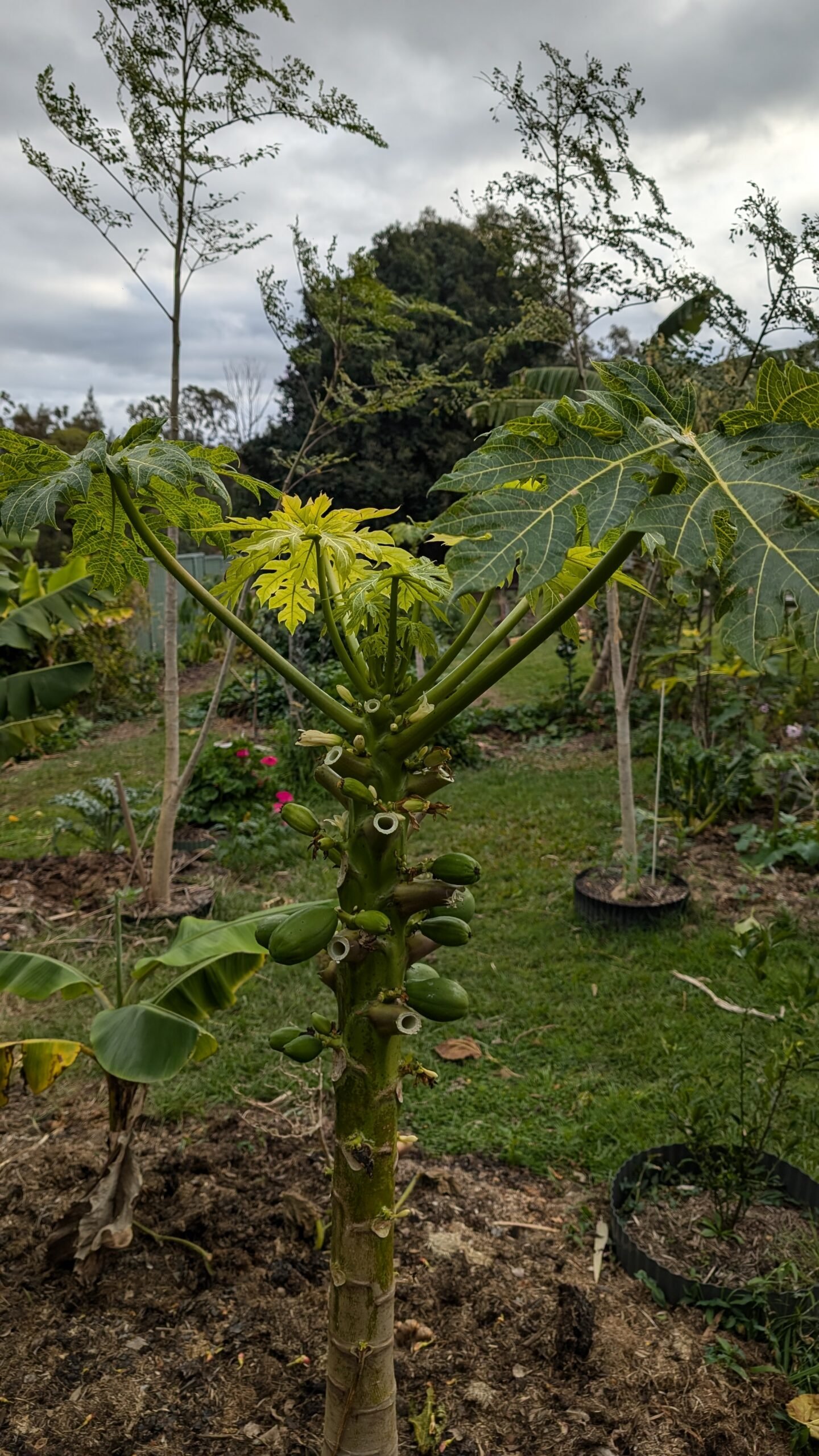
We removed all fungus affected leaves and fruit.
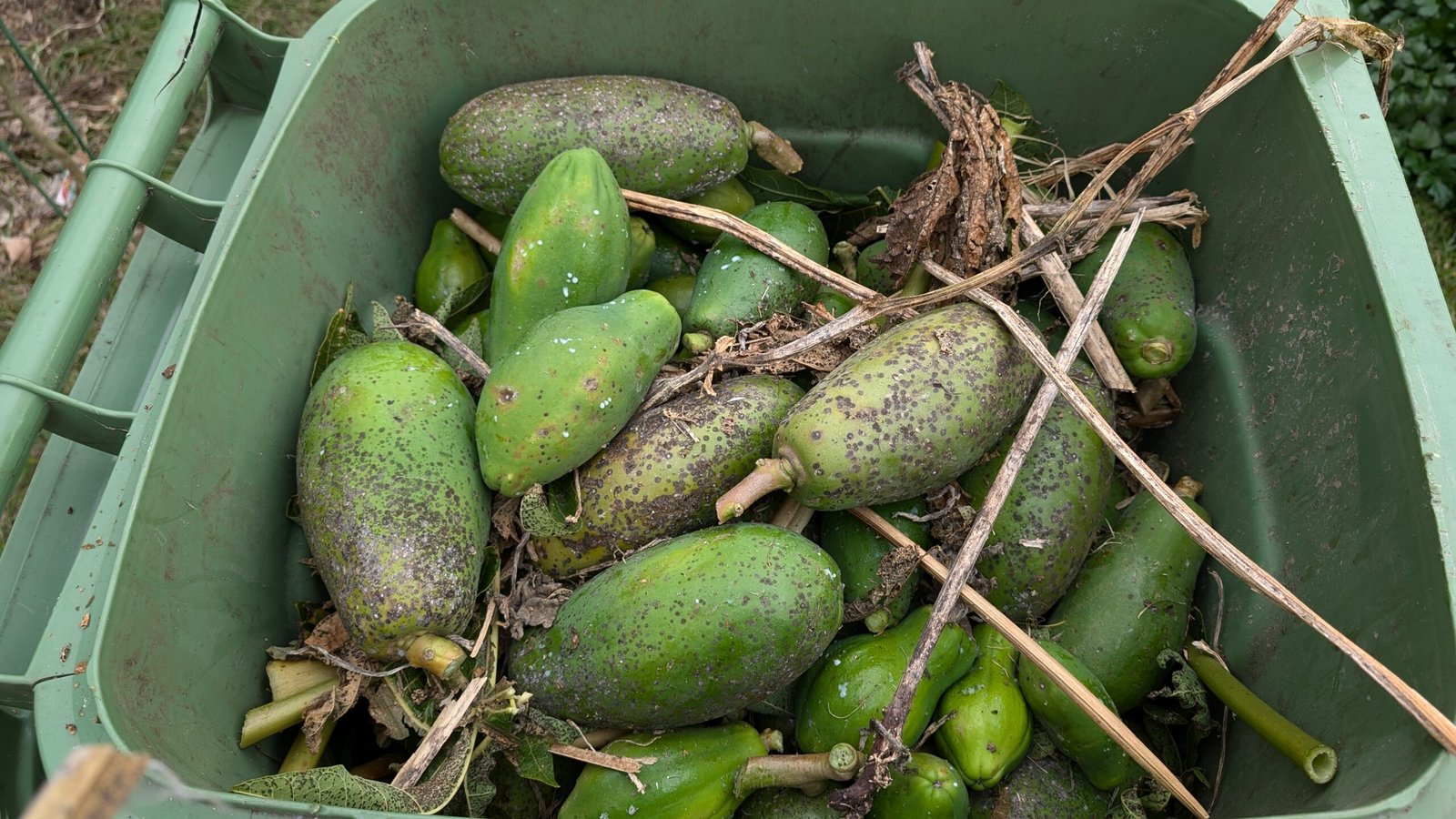
We bagged and binned them, to reduce the fungal spore load on-site.

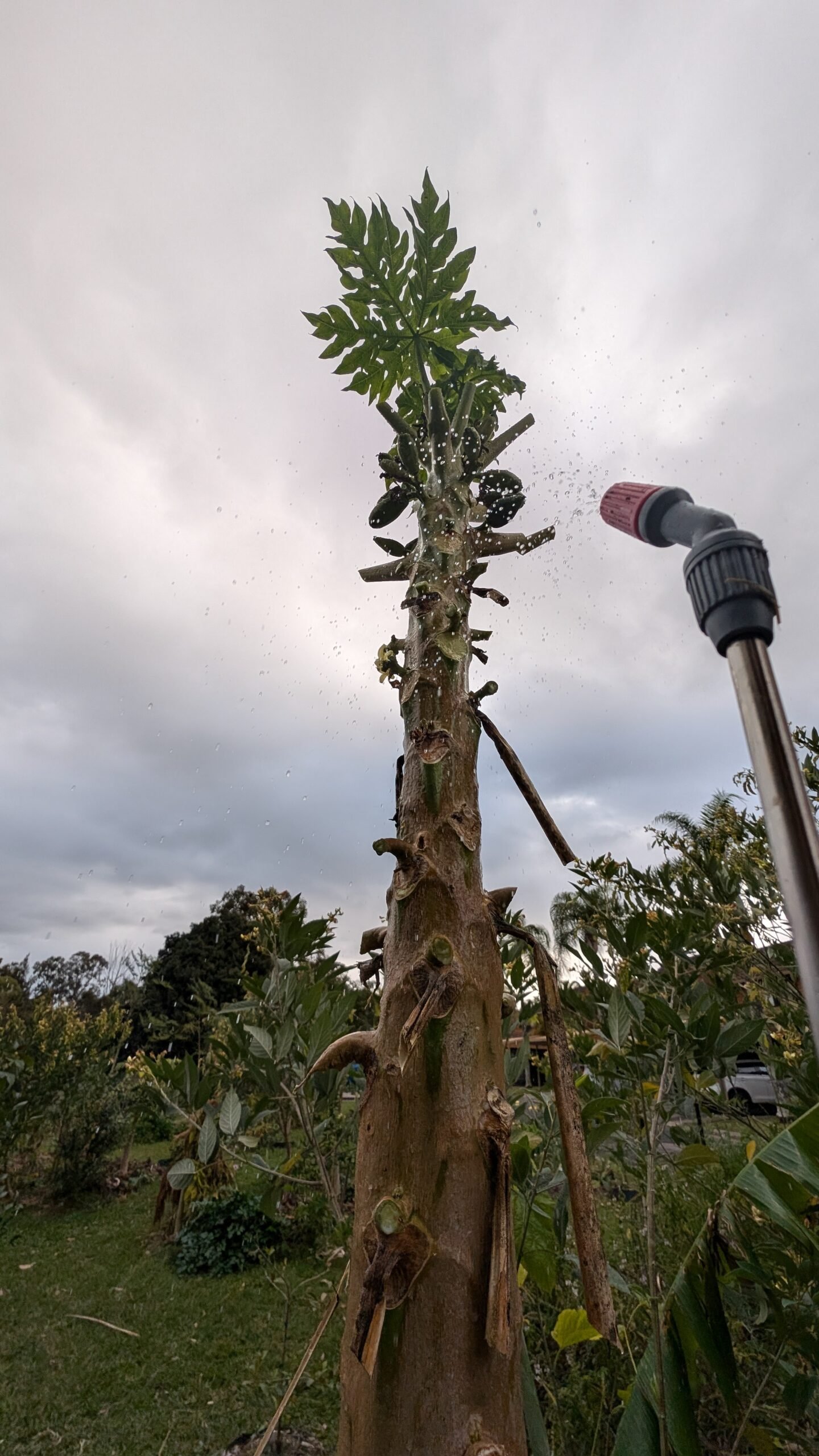
We sprayed the bare trees with a solution of sodium bicarbonate.
After a rainy week, we repeated that, and gave every paw paw a does of KPPh. Ideally, those minerals would have come from natural sources – e.g. chicken poo for potassium. I took the convenient short cut of super phosphate, Epsom salts, and Liquid potash.
The forward plan is to monitor the plants closely and act more intently on any infestations that occur. If sodium bicarbonate is not effective in preventing outbreaks, we will try other solutions.
